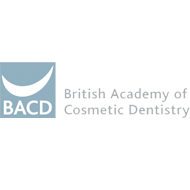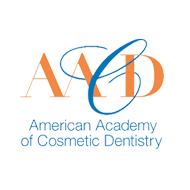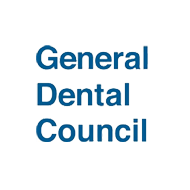Search the A-Z for the meaning of the word or simply to find out more about dental health.
There are currently 20 names in this directory beginning with the letter C.
Calculus
Hardened plaque. Calcium salts produced by saliva harden any plaque which is left on the surface of teeth. These deposits are particularly liable to build on the tooth surfaces nearest to the salivary ducts beneath the tongue and in the cheeks close to the upper first molars. The presence of calculus indicates an alkaline saliva and a low risk of caries or decay. Smoking tends to encourage calculus formation. The build up of calculus must be controlled by scaling of the teeth otherwise gingivitis and the breakdown of the tooth attachment can occur.
Canal
Usually applied to the narrow space within the root of a tooth that contains the blood vessels, nerves and tissues i.e. the root canal.
Cancer of The Mouth
Cancer of the mouth and pharynx is the fifth most common form of cancer in men and the seventh most common in women. Most people are not aware of its existence Cancer of the mouth is responsible for nearly 3% of all cancer deaths. There is a 50% survival rate in those cases diagnosed at an early stage. Factors which are commonly associated with cancer of the mouth are smoking and alcohol.
Regular examination of the mouth will reduce the likelihood of an early lesion being unnoticed. Any ulcer of the mouth which is present for more than a few days should immediately be seen by a dental surgeon.
Candida
A fungal infection. Candida is often present in the mouth without causing symptoms, even in healthy people. Candida is the cause of oral thrush, denture stomatitis and angular chelitis.
Canine
A tooth sometimes called the eye-tooth in the upper jaw. So named as the tooth begins to develop just beneath the floor of the eye socket. Also referred to as cuspids.
Cement
Used as temporary fillings in cases of emergency, when many fillings have to be done in a short period of time, or when further treatment to a tooth may be required. They are made of zinc oxide and eugenol or similar materials and may last for a few weeks to many months.
There is also a stronger type used to fix crowns and bridges permanently.
Cementum
A bony substance covering the root of a tooth which is part of the tooth attachment to the jaw bone. This area can become exposed when the gums recede and, due to the presence of nerve fibres, can lead to discomfort and sensitivity.
Centrals
The two upper and two lower teeth in the centre of your mouth also known as the central incisors.
Chipped Teeth
Teeth can chip due to trauma, but they can also fracture through underlying tooth decay (cavities). Teeth that are brittle due to root canal treatment, congenital abnormality or bruxism (tooth grinding) may chip more easily.
A tooth may have damage to the hard tissue 'a chip or fracture of the crown or crown and root' or it may have damage to the supporting soft tissues and blood vessels. The fracture can go through enamel only, through into dentine (sensitive yellower tissue under the enamel) or into the pulp (nerve and blood vessels). It is important to have the teeth checked to ensure that injures are treated appropriately and promptly.
Chronic
A chronic condition is a long-term disease, illness or injury (as opposed to an 'acute' condition which is short-term.).
Chronic conditions are extremely difficult to cure permanently and tend to recur. Long term monitoring of these conditions is essential. The most common chronic dental conditions are associated with gum disease. To avoid this regular dental visits are essential.
Cold Sores
Cold sores are small eruptions usually affecting the lips at the point where the lip joins the skin of the face. They tend to recur in the same place. They begin as a tingling sensation, and then a small blister (vesicle) forms, which then crusts over to leave a small scab that eventually heals.
They are caused by a virus called herpes simplex virus (HSV). It is similar to the virus that causes chickenpox, as are the blisters that result.
Composites
Composites are tooth coloured resin filling materials. They are used as an alternative when an amalgam filling is not cosmetically acceptable. The quality of the finished result will vary depending on the experience and craftsmanship of the practitioner.
Cosmetic Dentistry
Techniques that can be used to improve the appearance of teeth. Crowns, veneers, and tooth whitening are included.
Cross bite
The upper teeth meet inside the lower teeth either on one or both sides of the mouth. It may be possible to correct a crossed bite with orthodontic treatment.
Crowns
The part of a natural tooth which is exposed in the mouth is called the crown and is covered in enamel. The term is also used to refer to an artificial covering that is made from metal [e.g. gold], or porcelain, to restore or conserve a damaged tooth.
Cuspid
These are the pointed single teeth that are set at the corner of the mouth behind the lateral incisors. Cuspids are also known as canines.
Cyst
A tissue sac which becomes filled with fluid. If left untreated it will gradually enlarge and cause the surrounding bone to resorb. Cysts are most frequently found at the pointed bottom [apex] of a dead or infected tooth. They are rarely associated with any symptoms in their early stages but can become infected and painful.








